I recently recovered from a virus– thankfully, not the one everyone is concerned about. With nothing else to do, I started watching Mr. Robot (a television drama that is a mix between heist movies and Fight Club). In the final season of the show, there is a scene where the main character must gain access to a server room for a secure company in a shared workspace. Another fictional company that occupies this same building is a makerlab. In the show, characters use social engineering to obtain a fingerprint from one of the security guards in order to then sneak up to the makerlab. From there, they use software to create a 3D file from a grayscale photo and print the inverse for a mold. They quickly use some putty to create a fake fingerprint to use on a fingerprint scanner and then gain access to a restricted room to commit their nefarious acts. When I first saw this, I was screaming at my TV saying, “that’s not possible!” But, as I gave it more thought, I began to think maybe it was…
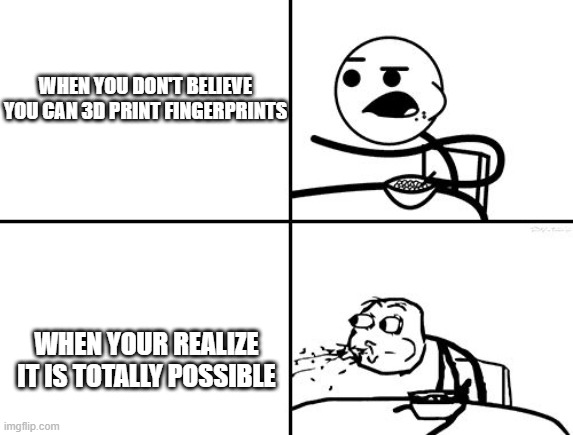
This article explores the crazy ways that movies and television have portrayed 3D printing and whether or not those ways are achievable or realistic. Surprisingly, sometimes movies are more fact than fiction.
Mr. Robot – 3D Printing a Fingerprint
To start, let’s look at the show that inspired this review. As described above, some hackers need to gain access to a room through a fingerprint-locked door. To do this, they lift a fingerprint from a phone screen and create a 3D file. They then invert and print it to create a mold for some putty. Using this putty, they easily gain access to the room.
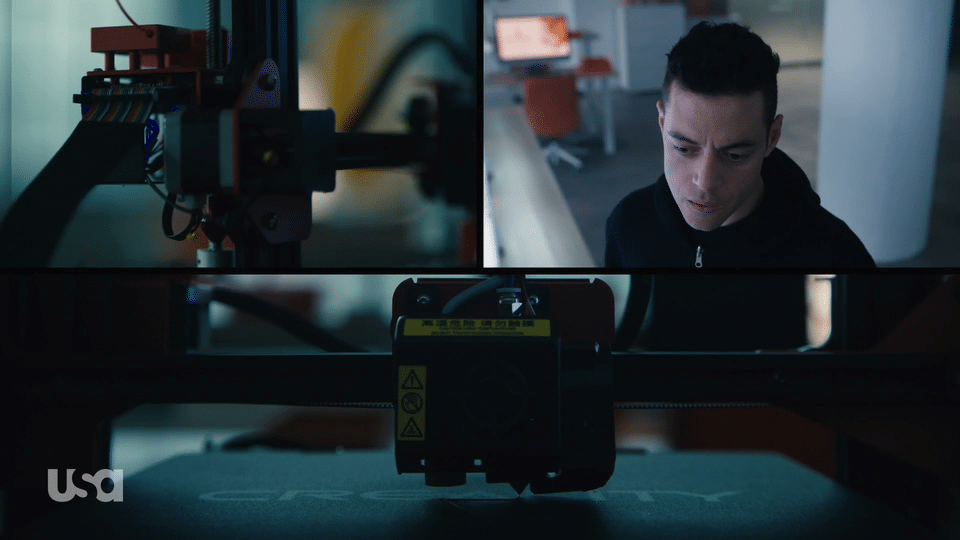
Firstly, most fingerprint scanners are capacitive touch devices; they use electrical signals to measure the depth of the ridges in a fingerprint as well as the pattern. Using the grayscale pattern to create a texture map is definitely possible and even available in some free programs such as MeshLab. However, without having an actual data point of the height and location of a ridge, it is impossible to know how to scale the image vertically in order to match it exactly. In the same way, people are not machines and do not apply the exact same amount of pressure everytime they scan a finger. Therefore, the ridge depth can’t be a huge contributing factor to the scan– so, it seems plausible that you could create a working file. Would a 3D printer be able to print at a high enough resolution to achieve the correct fingerprint pattern? The average depth of ridges on a fingerprint are ~50um. While the FDM (fused deposition modeling) Ultimaker 2 printer shown in the movie probably wouldn’t cut it, there are plenty of printers that are capable of printing resolutions less than 50um– including some printers as cheap as $200.
In fact, researchers from Cisco Talos were actually able to achieve an unlock rate using several different fingerprint collection methods and 3D printing molds just as the show displayed.
Verdict: Fact!
Jurassic Park 3: Printing Fossils
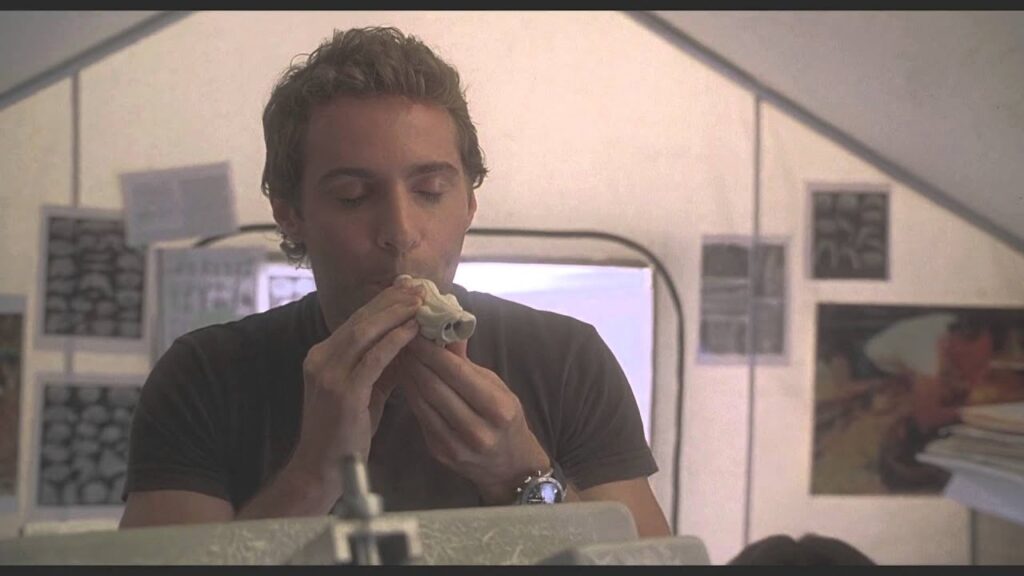
In Jurassic Park 3, a scientist uses a “rapid prototyper” and some scan data of a real fossil to recreate a scaled down dinosaur skull. Dinosaur fossils have regularly been scanned as catalog data while trying to limit the amount of actual interaction with the real fossil. This practice has been going on for decades and contributes to the wider knowledge of the scientific community. CT scans are common ways to collect 3D data of the fossils, and can be done so relatively quickly and easily. GE (General Electric) even makes a mobile CT scanning trailer that can be taken to an excavation site.
Once the scan data has been obtained, pretty much any 3D printer could provide a model of a dinosaur skeleton. Depending on the quality you are trying to achieve, the print technology may change. We have actually printed a small scale replica of a Tyrannosaurus Rex. Check it out!
Verdict: Fact!
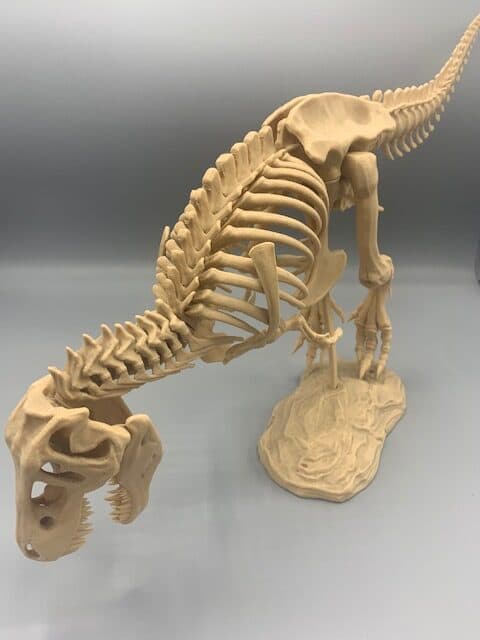
Westworld: Printing Bionic Robot Flesh
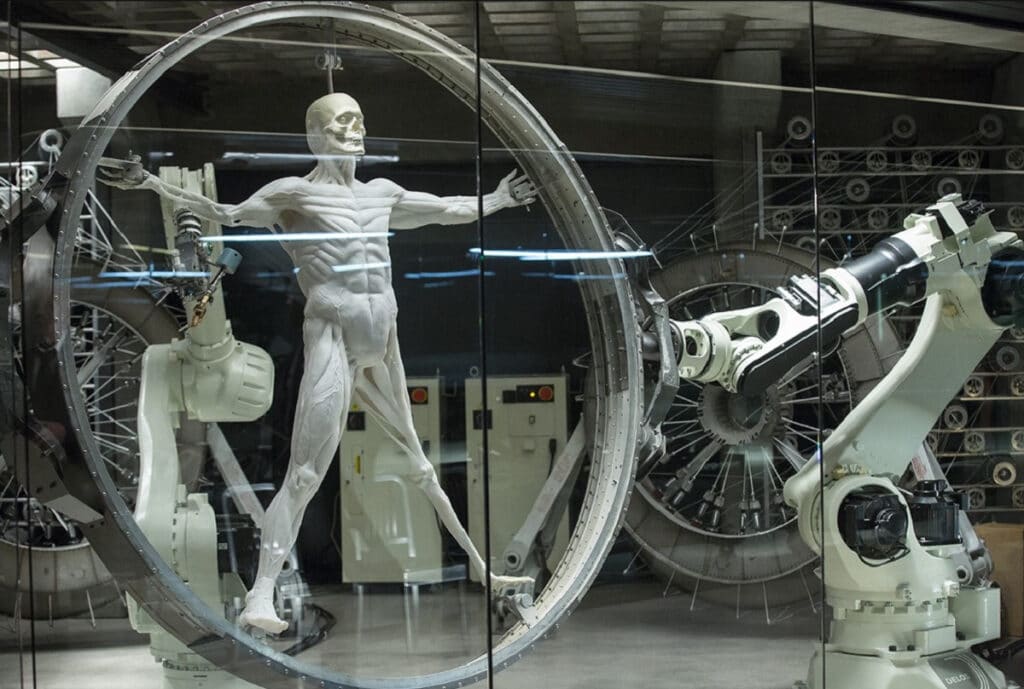
The series Westworld displays some nifty space-age looking robotic arms with some gooey, white biomaterial to create the flesh and bones of the robot citizens that inhabit it. The machine that it shows does exist… sort of. Robotic arms like these are used in all kinds of manufacturing plants– from automotive, to electronic, and more.They do have a sophisticated range of movement that allows them to move on multiple axes throughout space. They are programmed to do so with some machines even using AI and machine learning. The biomaterial printer also exists… again, sort of. There are many research and medical facilities currently using bioprinters to print tissue and other biomaterials. This process even looks similar to what is laid out in the Westworld opening with a syringe needle dispersing bio ink. However, the speed and scale at which Westworld’s machine operates is nowhere close to achievable or realistic. While rooted in a lot of reality, the process shown in Westworld is not possible at this time.
Verdict: Fiction!
Lost In Space: 3D Printing Medical Equipment
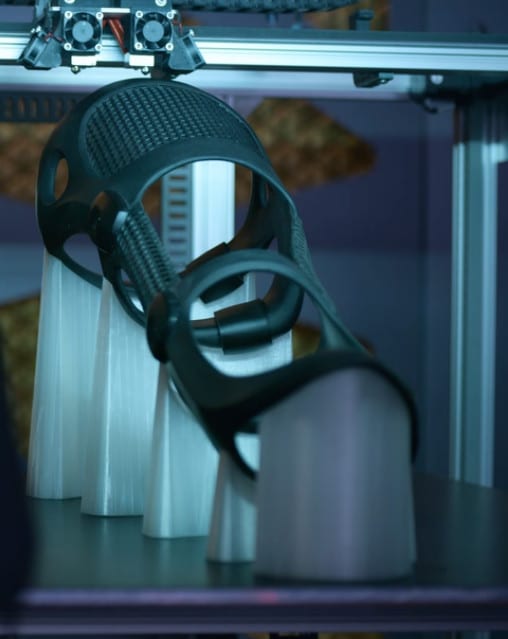
In the Netflix adaptation of the classic TV program, Lost in Space, 3D printers are used everywhere as a common appliance. Early on in the show, a crewmember hurts their leg and a brace is printed for them. While this show takes place in the future, everything that is seen in the show can be done today! The series does a great job of showing the actual capabilities of 3D printing as well as limitations: print times are realistic, support material is used, and a dual extrusion printer accomplishes multi material prints. Even the object being printed is realistic. Many organizations use scanned data along with 3D printing to create beautiful, ergonomic, custom braces and prosthetics for humans and animals alike! Even printing in space is possible as 3D printers are already in use on the ISS.
Verdict: Fact!
Star Trek- Replicator
Being one of the rare science fiction nerds who isn’t either a Star Wars or a Star Trek fan, I had never heard about the replicator until I started 3D design and printing… then I heard it everywhere. In the show, the replicator is a device that could essentially materialize anything you want that fits within its build volume… such as food, weapons, medicine, etc. The even better part of this concept is that anything you want to throw away could be put into the replicator to be broken down and recycled. While there is a 3D printer called the “Replicator,” there sadly is no machine that can achieve what the Star Trek replicator could.
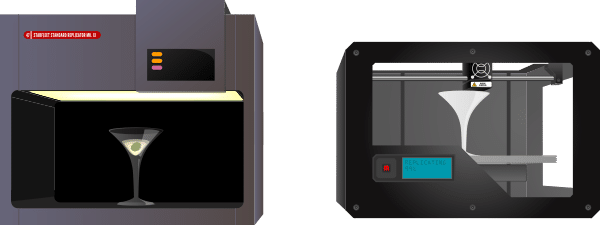
There are printers that can print weapons. There are printers that can print food items… chocolate printers and cheese printers. There are even bioprinters that can print drug capsules as well as the aforementioned tissue and other medical devices. However, there is no machine that can do all of this in a split second… and with no specific feed material.
Verdict: Fiction!
Conclusion:
3D Printing has grown rapidly in its capabilities over the last few decades. Sometimes fact is stranger than fiction.
Do you have any groundbreaking ideas to push 3D printing to the limit?
Reach out to The 3D Printing Store and let us help you with your project: project@the3dprintingstore.com



